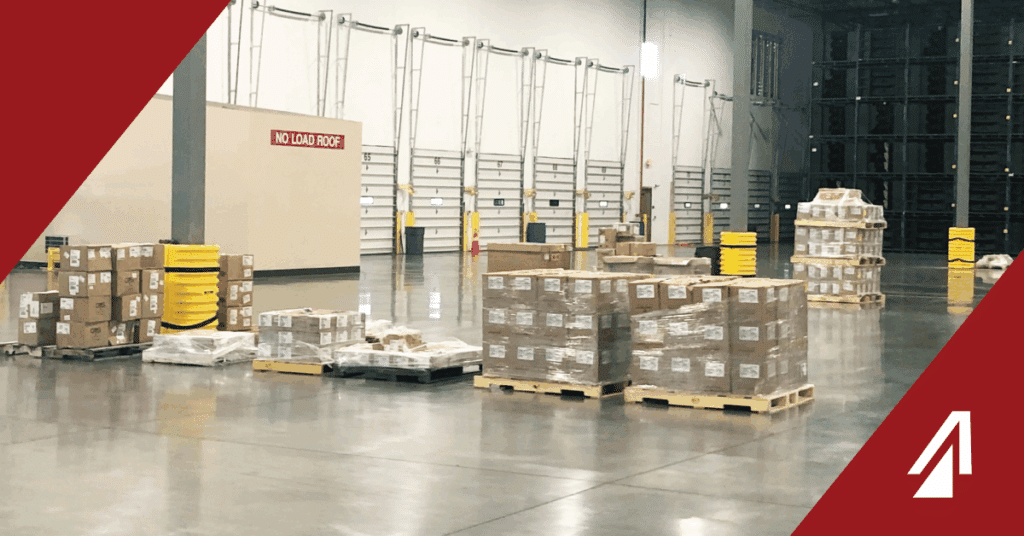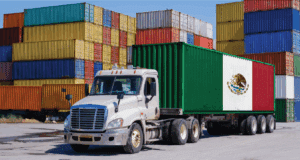When most shippers think about freight consolidation, one metric usually comes to mind first: lower transportation spend. It’s the most obvious and tangible benefit — combining shipments into fewer, fuller loads enhances utilization and reduces per-unit freight costs, plain and simple. But if your view of consolidation stops there, you’re missing the bigger picture.
The truth is that the real return on investment (ROI) of freight consolidation goes far beyond transportation cost savings. For manufacturers competing in high-pressure markets, such as automotive, electronics, medical devices, and aerospace, consolidation strategies can unlock value across the entire supply chain.
In this blog, we’ll explore the “hidden ROI” of freight consolidation: the overlooked benefits that help organizations build resilience, improve efficiency, and strengthen customer relationships.
1. Improved Inventory Flow and Working Capital
One of the least discussed, yet most powerful, impacts of consolidation is its effect on inventory management.
When shipments move more predictably and in optimized volumes, businesses gain tighter control over their inventory levels. Instead of dealing with a flood of small, piecemeal shipments that cause bottlenecks in receiving, consolidated loads create smoother, more predictable material flows.
This improved flow of goods has ripple effects:
- Reduced safety stock requirements because you can trust the cadence of inbound supply.
- Lower carrying costs, since goods spend less time sitting in storage.
- Faster turnover of materials, which frees up working capital for other investments.
Think of consolidation not just as a freight strategy, but as an inventory efficiency tool. In an environment where cash flow and working capital are critical, that’s a return that doesn’t show up in your freight bill but directly impacts your bottom line.
2. Enhanced Supply Chain Reliability
Manufacturers live and die by reliability. A line shutdown caused by a late shipment doesn’t just cost money — it damages credibility and erodes customer trust.
Freight consolidation can significantly improve reliability. Why? Because you’re not trying to assemble fragmented shipments across multiple carriers and schedules. Instead, you’re aligning your suppliers and shipments within a structured, managed network where optimization and visibility are built into the process.
When fewer moving parts are involved, there’s less risk of delays, missed pickups, or misrouted freight. Over time, that reliability compounds into a powerful competitive advantage: customers and suppliers alike learn that they can count on you.
3. Stronger Cross-Border Performance
If your supply chain touches U.S.–Mexico trade lanes, freight consolidation offers your business even more ROI.
Border crossings are notoriously complex, with risks ranging from customs delays to incomplete paperwork. By consolidating freight, you’re not only cutting costs — you’re also reducing the number of border events your shipments must go through. That means fewer opportunities for inspections, holdups, or compliance issues.
The result is faster, smoother, and more predictable cross-border flows. For industries where supply chains are tightly linked between North American manufacturing hubs, that predictability translates into fewer disruptions and better production scheduling.
4. Administrative and Process Efficiency
Every shipment generates administrative overhead: invoices to process, data to reconcile, tracking updates to monitor, and customer service calls to handle. Multiply that by dozens or hundreds of small, fragmented shipments, and you’ve created a paperwork nightmare.
Consolidation streamlines the back office as much as it streamlines shipments on the road:
- Fewer invoices to process.
- Less reconciliation of freight bills.
- Simpler tracking and reporting.
- Reduced customer service inquiries.
The ROI here isn’t always evident in dollars and cents, but the labor savings, reduced errors, and faster administrative cycles can be just as valuable. Freeing up your people to focus on higher-value work, instead of chasing paperwork, pays dividends.
5. Sustainability and Corporate Responsibility
Sustainability has moved from a “nice-to-have” to a must-have for many supply chains, particularly those serving global OEMs and enterprise customers. Freight consolidation directly contributes to sustainability goals by reducing the number of trucks on the road and improving utilization.
Fewer half-empty trucks mean:
- Lower fuel consumption.
- Reduced CO₂ emissions.
- A cleaner, greener supply chain footprint.
Consolidation isn’t just good for the planet — it’s good for business. Many customers now consider sustainability metrics when evaluating suppliers. By consolidating freight, companies can enhance their ESG reporting, secure contracts, and strengthen their brand reputation.
6. Stronger Supplier and Customer Relationships
Consolidation also has a hidden human ROI: it improves how you interact with both suppliers and customers.
For suppliers, predictable and consolidated pickups mean less chaos at their docks. For customers, consolidated deliveries reduce receiving headaches and create a more seamless experience.
These small operational wins add up. Suppliers are more willing to collaborate when logistics are smoother, and customers notice when orders arrive reliably and on time. Over the long run, that consistency strengthens partnerships — and partnerships are a form of ROI that can’t be measured on a spreadsheet.
7. Risk Mitigation and Supply Chain Resilience
Disruptions are now a fact of life in global supply chains. Tariffs shift, fuel prices fluctuate, and geopolitical tensions impact trade flows.
Consolidation provides a layer of resilience. By working with providers that specialize in consolidation networks, you gain access to:
- Alternative routing options in case of disruption.
- Flexibility to adjust volumes without completely re-engineering your network.
- Built-in contingency planning through shared infrastructure and partnerships.
This ability to pivot quickly is increasingly valuable. The ROI of resilience often shows up only during a crisis — but when it does, it can mean the difference between a slight delay and a significant disruption.
8. Data-Driven Insights
When shipments move through a managed consolidation network, they generate cleaner, more structured data. Manufacturers and their logistics providers can leverage this data for:
- Identifying patterns in demand and seasonality.
- Spotting inefficiencies in routes and modes.
- Forecasting costs with greater accuracy.
The hidden ROI here is better decision-making. With improved data visibility, companies can shift from reactive to proactive logistics management. That kind of foresight leads to smarter strategies and more sustainable growth.
The ROI Multiplier Effect
Here’s the key takeaway: transportation savings are just the beginning.
Freight consolidation is a multiplier — it reduces direct freight costs, yes, but it also creates efficiencies across finance, operations, customer service, compliance, and sustainability. When all these hidden returns are factored in, the true ROI of consolidation is far greater than most companies realize.
For manufacturers operating in competitive industries, overlooking these benefits is leaving money (and opportunity) on the table.
If you’re evaluating freight consolidation solely through the lens of transportation cost per mile, you’re not seeing the whole picture. The hidden ROI spans inventory, reliability, sustainability, risk management, and even customer satisfaction. In today’s environment, where every advantage matters, freight consolidation is more than a cost-saver — it’s a competitive differentiator.
The companies that recognize and leverage these hidden benefits will not only spend less on freight, but also build supply chains that are leaner, smarter, and more resilient. With more than 30 facilities throughout North America and Europe, ProTrans offers a well-established network and extensive expertise in freight consolidation worldwide. Contact our team today to discover how to maximize efficiency while minimizing costs in today’s fast-paced market.



